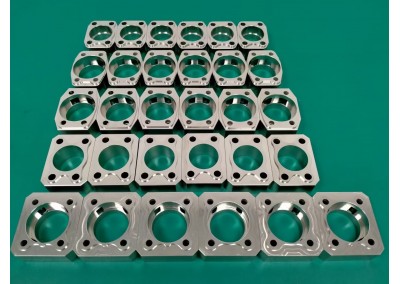Quick Link
Find Products
Contact us
News
Home > News > What are the differences between injection molding and urethane
What are the differences between injection molding and urethane
Injection molding and Urethane are generally similar processes. The differences lie in the details related to manufacturing practices.
Quantity and Production Volume
Urethane molding is used to produce only a few parts at a time, therefore for low volume runs Urethane molding is preferred. For high-volume production quantities, the quality and lifespan of a tool steel mold will generally yield the better return. Therefore it is more economical to invest in injection molding setup for high volume production. If upfront cost is kept to be low, then Urethane molding is preferred.
Material Cost
High-quality plastic used in injection molding is more expensive as compared to the urethane or polyurethane resin being employed in the urethane molding. If one has to produce fewer prototypes it is better to use urethane resins. For products that are supposed to be used for long run, or with applications with certain tough physical properties, proper plastic must be used and the injection molding process should be used.
Tool Manufacturing
Injection molding tool requires more intricate and extensive machining to create and usually are not ready for several weeks. A typical lead time of almost two months might be required for the manufacturing of injection molding tool. Whereas urethane casts consume relatively lesser time for production usually requiring just a 3D printed model and a soft mold to be created around it.
Per-part Cost vs. Overall Cost
In general, per-part costs for urethane casting will be higher than for injection molding, due primarily to the lower volume of parts created. Overall costs, however, are typically lower for urethane casting because of lower tooling and material costs.
Tolerance
Urethane tolerances are +/-.010” for the first inch, and +/-.005” for every inch afterward whereas in injection molding tolerances are +/-.005” for the first inch, and +/-.002” for every inch afterward.
Applications
As the prototypes are made by silicon molds in urethane molding which is comparably less durable and does not last for more than 20-25 parts. Therefore this process is suitable for situations where production volume is low and lesser parts of high-quality, precision and performance characteristic would be required. Some of the applications of urethane molding are listed below:
Consumer testing
Concept models
Conveyor Systems
Exhibit parts
Engineering models
Marketing test samples
Point of purchase display parts
Rapid prototypes
Pre-production runs
Printing
Sales samples
Test prototypes
Wheels for Skateboards, Robots and other rotating applications
Quantity and Production Volume
Urethane molding is used to produce only a few parts at a time, therefore for low volume runs Urethane molding is preferred. For high-volume production quantities, the quality and lifespan of a tool steel mold will generally yield the better return. Therefore it is more economical to invest in injection molding setup for high volume production. If upfront cost is kept to be low, then Urethane molding is preferred.
Material Cost
High-quality plastic used in injection molding is more expensive as compared to the urethane or polyurethane resin being employed in the urethane molding. If one has to produce fewer prototypes it is better to use urethane resins. For products that are supposed to be used for long run, or with applications with certain tough physical properties, proper plastic must be used and the injection molding process should be used.
Tool Manufacturing
The first difference between injection molding and urethane molding lies in the manufacturing of their tools. Injecting molding employs a hard tool as compared to the soft tool used in urethane molding. Therefore urethane casts are made by molding a 3D printed model of the finished part, whereas injection molding tools are machined via CNC grinding, milling, and other processes.
Injection molding tool requires more intricate and extensive machining to create and usually are not ready for several weeks. A typical lead time of almost two months might be required for the manufacturing of injection molding tool. Whereas urethane casts consume relatively lesser time for production usually requiring just a 3D printed model and a soft mold to be created around it.
Per-part Cost vs. Overall Cost
In general, per-part costs for urethane casting will be higher than for injection molding, due primarily to the lower volume of parts created. Overall costs, however, are typically lower for urethane casting because of lower tooling and material costs.
Tolerance
Urethane tolerances are +/-.010” for the first inch, and +/-.005” for every inch afterward whereas in injection molding tolerances are +/-.005” for the first inch, and +/-.002” for every inch afterward.
Applications
As the prototypes are made by silicon molds in urethane molding which is comparably less durable and does not last for more than 20-25 parts. Therefore this process is suitable for situations where production volume is low and lesser parts of high-quality, precision and performance characteristic would be required. Some of the applications of urethane molding are listed below:
Consumer testing
Concept models
Conveyor Systems
Exhibit parts
Engineering models
Marketing test samples
Point of purchase display parts
Rapid prototypes
Pre-production runs
Printing
Sales samples
Test prototypes
Wheels for Skateboards, Robots and other rotating applications




